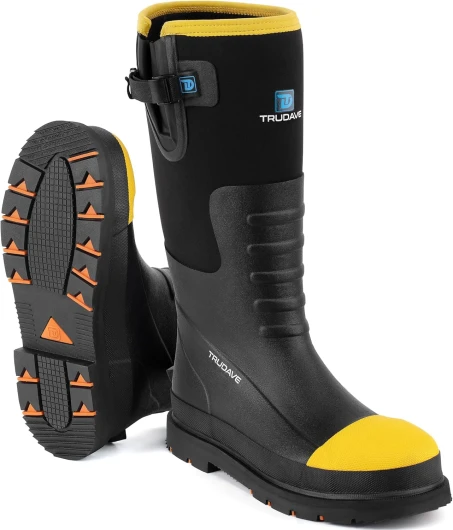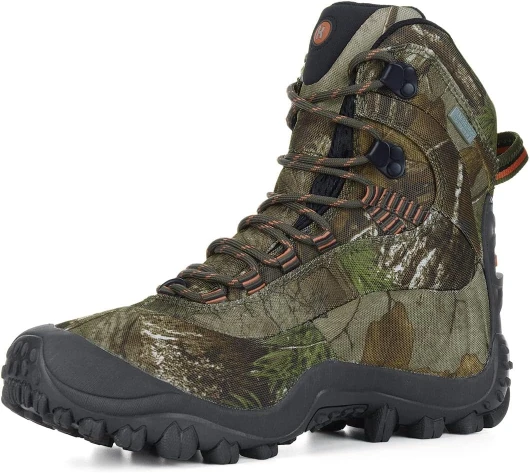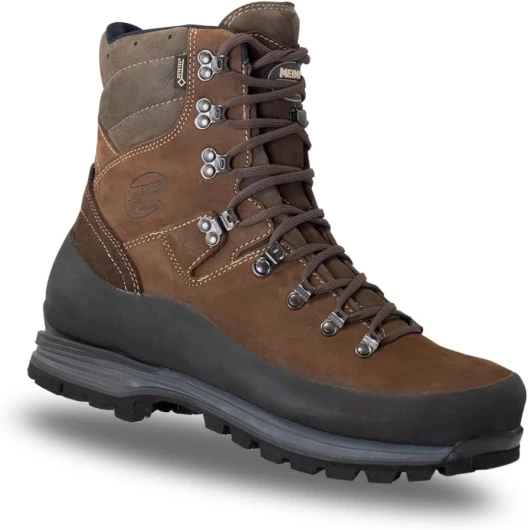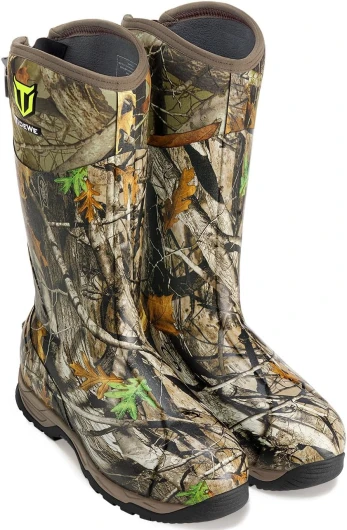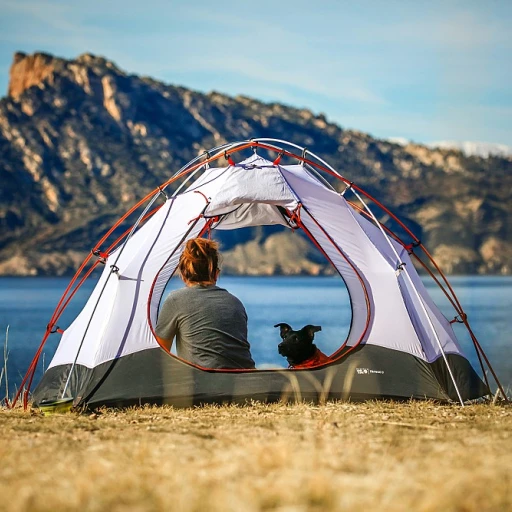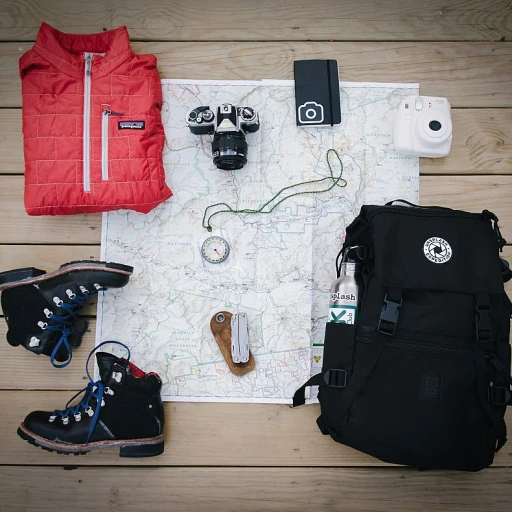
Understanding Uninsulated Hunting Boots
The Basics of Uninsulated Hunting Boots
Understanding the core aspects of uninsulated hunting boots can be beneficial to both seasoned outdoor enthusiasts and those new to hiking adventures. Uninsulated hunting boots are designed to provide versatility across a range of terrains and weather conditions. Unlike their insulated counterparts, these boots are crafted without additional thermal lining, making them an ideal choice for early season hunting or hiking in moderate temperatures. Most uninsulated boots are made with high-quality leather and may feature waterproof materials like Gore-Tex. This combination ensures that, while they may not keep your feet warm in extreme cold, they do offer protection against moisture. Outdoor enthusiasts often favor this type because it allows for better breathability; good socks can usually counter any slight chill. When considering uninsulated boots for your next adventure, think about the specific conditions you’ll be facing. Whether you’re exploring mossy oak forests or traversing rocky trails, the flexibility of these boots makes them a smart choice for a broad array of settings. For specific needs like protection against snake bites, you might want to explore the best snake boots for women. Uninsulated boots generally come at a regular price point, offering a balance between affordability and functional features that cater to various outdoor activities. As you look into this footwear, consider reading more about their advantages for outdoor enthusiasts in the subsequent sections.Advantages of Uninsulated Boots for Outdoor Enthusiasts
Benefits for Outdoor Enthusiasts and Hikers
Exploring the world of hunting boots can be a thrilling experience, especially when uninsulated variations come into play. For outdoor enthusiasts and avid hikers, opting for uninsulated hunting boots offers unique benefits that cater to diverse needs.- Versatile Performance: Uninsulated boots excel in varied terrains and weather conditions. While insulated boots might trap heat around your feet, uninsulated options allow your feet to breathe, which is ideal for activities in milder climates or during early seasons.
- Temperature Regulation: The absence of insulation helps regulate temperature effectively, reducing the risk of cold feet often associated with insulated footwear. This can be a game-changer for those venturing out in environments where maintaining a regular body temperature is crucial.
- Lightweight Comfort: Without added insulation, these boots are typically lighter, offering greater mobility and ease of movement. Whether it's climbing over rocks or traversing through dense forests, less weight means less strain on the legs, enhancing your overall hiking experience.
- Cost-Effectiveness: Uninsulated hunting boots can be more affordable compared to their insulated counterparts. For those on a budget, these boots offer excellent functionality at a regular price without compromising on the essential qualities of a good outdoor boot.
- Exceptional Versatility: Beyond hiking, uninsulated boots serve well in various hunting conditions, from wearing camo or snake boots for protection in particular climates. Their adaptability extends to different locations, making them a prudent choice for well-rounded outdoor activities.
- Durability: Constructed with robust materials such as leather, which are often complemented with features like Gore-Tex for waterproof capabilities, these boots stand strong against diverse environmental challenges, prolonging their lifespan and value.
Choosing the Right Uninsulated Hunting Boots
Factors to Consider When Selecting Your Ideal Pair
Choosing the right uninsulated hunting boots involves understanding your specific needs and preferences as an outdoor enthusiast. Let's delve into the key aspects to consider, ensuring you make an informed decision when selecting the best boots for your adventures.
- Purpose and Location: Consider where and how you plan to use your boots. Will you be hunting in warmer climates or during early season when cold feet are less of a concern? Understanding your typical locations can guide you to select boots that suit your activity level and terrain.
- Materials and Construction: Leather boots offer durability and mold to your feet over time, while synthetic materials such as Gore-Tex provide waterproof features and breathability. A well-constructed boot, such as those from popular brands like Crispi, ensures long-term durability.
- Fit and Comfort: A good fit is paramount. Try boots on with the socks you typically wear during your expeditions for a more precise fit. Pay attention to any pinching or pressure points when walking.
- Weight and Flexibility: Uninsulated boots are generally lighter, providing more agility and less fatigue. However, ensure they provide enough support and protection, especially if navigating challenging terrains.
- Price Range: Assess your budget while balancing price with quality and longevity. Opt for reputable brands or consult well member forums for insights. While higher price doesn’t always mean better quality, investing in a reliable pair often saves in the long run.
For outdoor adventures that don't require insulation, choosing the perfect uninsulated pair ultimately depends on your personal requirements and the specific conditions you'll encounter. Explore more about boot selection for different purposes by visiting the insights guide here.
Comparing Uninsulated and Insulated Boots
Decoding the Differences Between Insulated and Uninsulated Boots
When venturing into the great outdoors, choosing between insulated and uninsulated boots is crucial. Each has its unique set of features suited for different conditions. In this analysis, we'll break down these distinctions to aid in making a more informed decision for your hiking or hunting needs. Uninsulated boots have gained popularity among outdoor enthusiasts for their adaptability. Perfect for warmer seasons, they offer versatility and breathability. The absence of insulation material allows for improved airflow, reducing the chance of sweaty feet, which can lead to blisters. This makes uninsulated hunting boots a favorite for early season hunting when temperatures are warmer. In contrast, insulated boots are designed to keep your feet warm in colder environments. They typically feature materials such as Gore-Tex or Thinsulate, providing warmth and waterproofing. However, the added material can contribute to more weight and reduced flexibility, impacting movement and potentially causing discomfort during longer treks. ### Key Comparisons:- Weight and Comfort: Uninsulated boots tend to be lighter, offering a more agile experience. Insulated boots, while providing warmth, can be heavier and may restrict movement.
- Versatility: Uninsulated models are adaptable for various climates, ideal for those who tackle diverse trails and weather conditions. Insulated boots are tailored for specific cold conditions, making them less versatile.
- Price Considerations: Generally, insulated boots come with a higher regular price due to the added materials and technology. Uninsulated boots provide a cost-effective option for those looking to explore different terrains without breaking the bank.
- Material and Construction: While leather boots are common across both categories, the use of waterproof technologies and construction such as camo boot designs or snake boot features can vary, impacting the boot's performance based on terrain and weather.
Care and Maintenance of Uninsulated Boots
Ensuring Longevity and Durability
Taking care of your uninsulated boots ensures they last, giving you the best value for your investment. Here, we delve into simple yet effective strategies for maintaining your boots, whether they are made from leather, Gore-Tex, or camo materials.
- Regular Cleaning: Remove dirt and debris after every use, particularly if you've been out hunting in marshy or dusty locations. A gentle brush and damp cloth work well for this task.
- Waterproofing: Keeping your boots waterproof is crucial. Many uninsulated boots, particularly waterproof insulated variants, have initial coatings, but reapplying a good quality waterproofing treatment can help preserve their integrity.
- Conditioning: For leather boots, regular conditioning helps maintain suppleness and prevent cracking. Utilizing proper leather conditioners can help restore moisture that leather often loses over time.
- Drying: After encountering water or sweat, it’s important to thoroughly dry your boots. Avoid using direct heat which can damage the material. Instead, stuff your boots with newspaper to absorb moisture and leave them in a well-ventilated area.
- Socks and Insoles: Pair your boots with good quality socks to minimize sweat and foul odors. Consider removable insoles for additional comfort and hygiene. Cleaning and replacing them regularly enhances foot comfort.
Resistant to Seasonal Changes
Uninsulated boots are adaptable across various terrains and are favored during early-season hikes and hunts. Compared to insulated versions, they provide superior breathability — ensuring that your feet remain cool and dry during intense activities. With the absence of extra insulation, these boots are lighter, adding to their comfort and appeal.
For those exploring challenging terrains, the choice between insulated and uninsulated boots can greatly depend on the climate and activity level. In colder environments, insulated boots prevent cold feet, while uninsulated ones are favored in warmer or mixed conditions. Regardless, regular maintenance ensures both types stay in excellent condition year-round.

